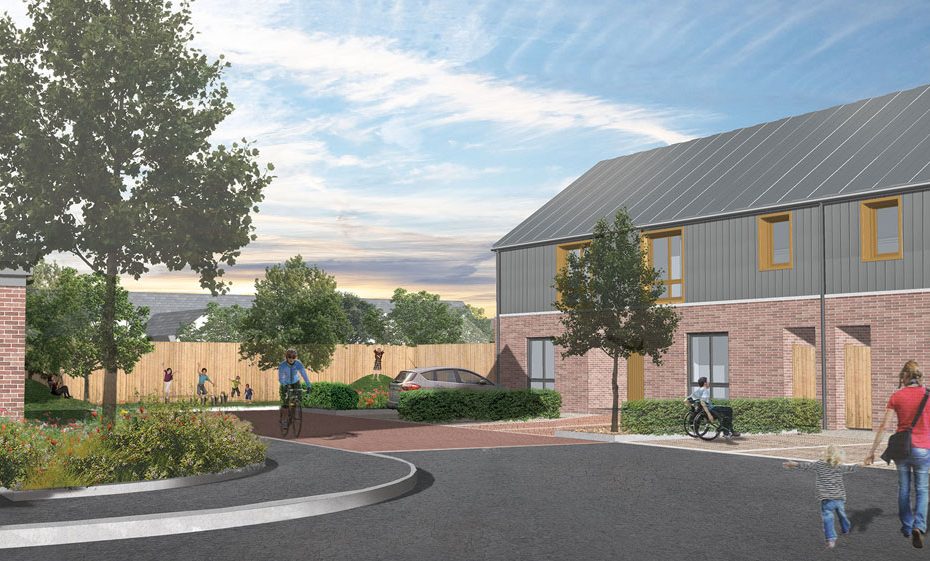[Written by Gill Kelleher, Policy and Engagement Manager at SPECIFIC]
David Attenborough’s poignant message at the opening ceremony of the United Nations sponsored climate talks, COP24 in December 2018, highlighted the need for us all to take action against the risks of climate change.
The naturalist was occupying the `people’s seat’ at the conference, acting as the link between the public and policy-makers. The most recent IPCC (Intergovernmental Panel on Climate Change) report indicated that global net human-caused emissions of carbon dioxide (CO2) need to fall by 45 percent from 2010 levels by 2030, reaching `net zero’ around 2050. Since buildings account for around 40% of global carbon emissions, the next 10-20 years demand rapid, far-reaching transitions in the way we heat and power our homes and neighbourhoods. (IPCC, carbon pathways). People, governments and cities are already taking steps to reduce their carbon impact. However, more needs to be done. For example, the California Building Standards Commission approved in December 2018 a new rule that all homes built in California after 2020 require the capacity to produce and process solar energy. Through this mandate, California will attempt to become the most highly populated area on earth that uses 100 percent renewable energy. In the UK, SPECIFIC Innovation and Knowledge Centre (Swansea University) and its partners are also using a range of full-scale building projects to demonstrate why homes and buildings are key to a decentralised energy future by creating `Active Buildings’ that can generate, store and release solar energy.
What will energy provision look like in an ideal world?
An Active Building integrates solar generation and storage technologies for both electricity and heat within its construction and uses an intelligent system to optimise energy management and comfort for inhabitants. Active Homes using this design require no gas for heating, whilst being net generators of solar energy, with the potential to share or trade surplus with surrounding buildings, electric vehicles or the grid. This provides a different social economic proposition. Our future homes and neighbourhoods can be used to reduce peak energy demand, whilst meeting consumer energy needs and reducing pollution; connecting communities of homes together, sharing energy and charging electric vehicles, including e-bikes. Modelled Energy global pathways that feature low carbon energy generation, and demand, show that the technical feasibility of solar energy and electricity storage technologies have substantially improved over the past few years. Unlocking this potential is not just a technical challenge, we also need to overcome economic, institutional and socio-cultural barriers, and inspire change in public behaviours.
What should we be doing about it now to make the vision a reality?
Climate change impacts and responses are closely linked to sustainable development, which balances social well-being, economic prosperity and environmental protection. Therefore, we need to manage and plan the use of our land and communities more effectively over the long term, making best use of innovation and technological advances. House-building and community infrastructure projects should be designed to transition away from fossil fuel power generation, to protect future generations from climate change risks. Greater investment is needed to extend decarbonised energy solutions across regions, and this requires access to finance, policy levers such as building regulations, local planning reforms and new governance models. An independent study (Bankovskis 2017) modelled the benefits of this approach, calculating what would happen if the ‘Active Homes design’ used for a development in Neath, South Wales, were applied to a million homes. It revealed that the average saving per household could be as much as £600 (a cut of more than 60%), whilst also reducing carbon dioxide emissions by nearly 80 million tonnes over 40 years and peak central generation capacity by 3,000 megawatts Ð equivalent to a very large power station.
Delivering Active Buildings at scale requires significant electricity market reforms, and greater investment priority for the decarbonisation of heat. There is a great prospect for the UK government to seize this golden, once in a century opportunity to mandate all future energy scenarios to include Active Buildings at scale as a key enabler to reach carbon targets and transform markets. In doing so, enabling the best trade-offs for sustainable development to be realised; protecting jobs, become world leading in `Active Building’ technologies, alleviating fuel poverty. With UK government house-building targets currently at 300,000 homes per year, 10-20 years could be enough time for millions of homes and vehicles to transition away from fossil fuels to solar powered, Active Buildings.
Read the full ‘Better Homes for an Ageing Population‘ White Paper
[Written by Agile Ageing Alliance, made possible by TATA Steel]
